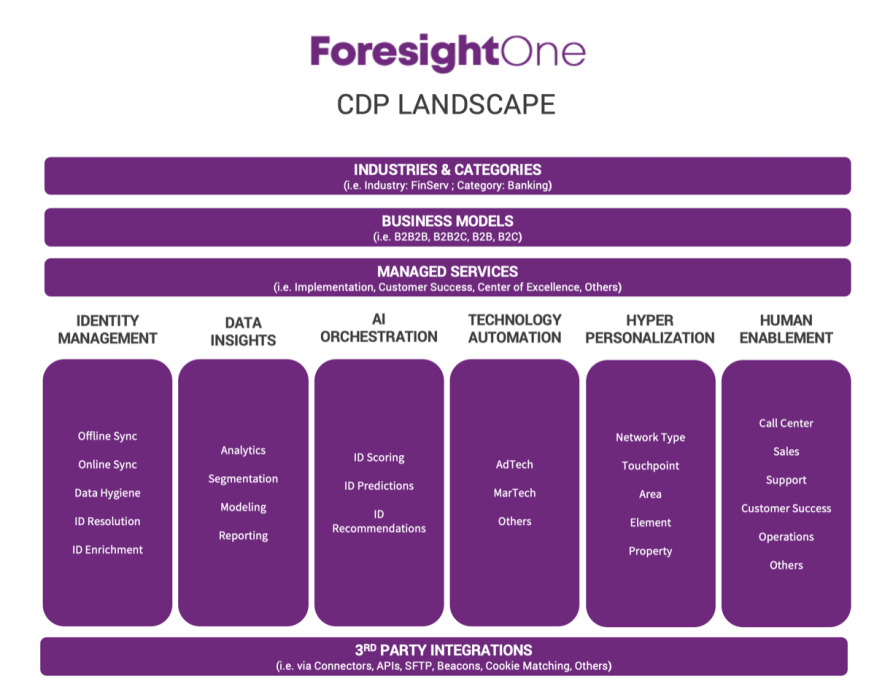Designed as an easy-to-use category reference, this stack represents our current view of the CDP Technology Category; click through the logos to find product information and a link to each vendor’s website. CabinetM is grateful to Cory Munchbach of BlueConic, Pedro Rego of ForesightOne, and David Raab of the CDP Institute, for all their help creating and structuring this stack.
“We’ve been talking about CDPs for several years but in the last 12 months we’ve seen real momentum around this category as companies grapple with establishing a single source of truth for customer data,” said Anita Brearton, CEO of CabinetM.
“The CDP category has been particularly difficult to segment. It’s likely that this interactive stack will continue to evolve structurally,” said Kat Powers, Editorial Director, CabinetM. “Our goal is to present the simplest model possible leveraging the input we have received from many of the 40+ CDP vendors.”
The CDP Institute defines a Customer Data Platform as “a marketer-managed system that creates a persistent, unified customer database that is accessible to other systems. This definition identifies three critical elements:
- It is a marketer-managed system. The CDP is built and controlled by the marketing department, not the corporate Information Technology department. Some technical resources will be required to set up and maintain the CDP, but it does not require the level of technical skill of a typical data warehouse project. What really matters is that marketing is in charge of deciding what goes into the system and what it exposes to other systems. In particular, it means marketing can make changes without asking anyone’s permission, although it may still need outside help.
- It creates a persistent, unified customer database. The CDP creates a comprehensive view of each customer by capturing data from multiple systems, linking information related to the same customer, and storing the information to track behavior over time. The CDP contains personal identifiers used to target marketing messages and track individual-level marketing results.
- Data is accessible to other systems. Data stored in the CDP can be used by other systems for analysis and to manage customer interactions.”
All CDPs share these core characteristics, however not all CDPs are created alike. In addition to these foundational characteristics, many CDPs add additional value by leveraging and analyzing the data they integrate to map customer journeys, refine customer segments, or deliver targeted and personalized marketing campaigns.
Gartner writes frequently on the topic of CDPs and has produced a helpful market report/buyer guide that can be downloaded from the BlueConic and Tealium sites. ForesightOne has produced their own view of the CDP landscape which may also be helpful to marketing teams considering purchasing a CDP.
Designed to be helpful in sourcing new products for the CDP layer of anyone’s marketing technology stack, this stack resides within the CDP categories in the CabinetM product directory. Vendors, this stack makes it easy to position your products in your category ecosystem. (If you need to update your product information, please claim your profile on CabinetM.)
CabinetM helps modern marketing teams build, manage and optimize their marketing technology stacks in a rapidly transforming digital marketing environment. The platform enables full lifecycle support around digital tool discovery, qualification, implementation and management by individual marketers, teams, and throughout enterprise organizations.
Please help us keep this stack up to date. Let us know if we’ve missed a product or category, have categorized something incorrectly, or if you have suggestions for improving our categorization. Contact Kat Powers at [email protected].








